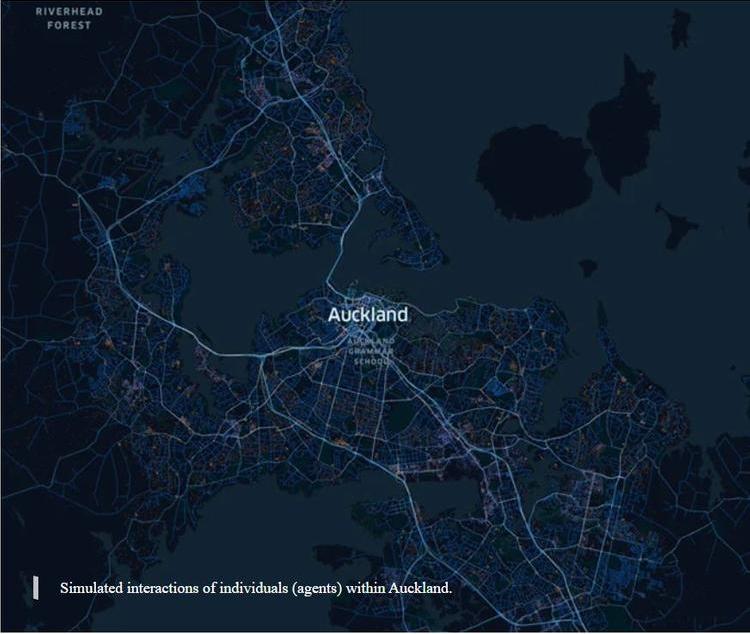Building an Agent Based Modelling capability for New Zealand
The ability to predict, forecast or simulate changes to a national transport system is limited. New Zealand’s Ministry of Transport is responsible for shaping New Zealand’s transport system, but understanding the impacts of regulation, policy or investment on this interconnected system is challenging. With a new direction focused on a transport system that delivers positive social, cultural, economic, and environmental outcomes, how can the Ministry take a strategic, integrated approach to ensure a socially equitable, and sustainable transport system nationally?
The Ministry is partnering with Arup to develop a national-scale, agent based model (ABM) to examine the impacts of transport system changes in a unified and systematic manner. The model seeks to replicate the many interactions of diverse individuals (agents) to understand how complex systems function and evolve, which then allow for a range of policy questions to be explored. For instance, how new infrastructure or road pricing affects travel behaviour and assessing the social and environmental impacts of such changes.
Our teams from New Zealand and London, together with the Ministry, have co-designed the plan for developing the simulation model for New Zealand to help the ministry improve its ability to plan and evaluate potential changes to the transport system and ensure a more sustainable future. The new model will support decision making through better use of data, technology and innovation to help navigate transport challenges over the next 5-50 years.

Ultimately it is not a transport model. It is a social model. There is real opportunity outside of transport if we build a framework where people’s behaviours are better understood.
Overcoming national challenges
In 2018, the Ministry developed the Transport Outcomes Framework, which set out a new direction for New Zealand and increased the focus on mode-neutrality to improve the long-term sustainability of the transport network. For the project to be successful, it is important for the model to respond to the needs of all individuals.
We created a vision with a set of design principles for building the simulation and engaged with key stakeholders over a three-month period to understand requirements and priority policy questions centred around five connected outcomes – inclusive access, economic prosperity, healthy and safe people, environmental sustainability, and resilience. The process highlighted a number of potential use cases to inform the model’s development and its value.

Modelling travel behaviours
Traditional methods to tackle similar national and local challenges often involves making sense of aggregate data. This can provide high-level, sensible estimates for transport service performance but we are limited in how we explore, slice, and integrate the data with this type of approach. Agents represent real people in a given area with daily activity plans including the way they interact with the transport network. Typically, ABMs tend to simulate the interactions of individuals on a smaller scale, such as within a city, however, this required a far broader approach
Building a model for a nation
We built the baseline model with the Ministry, with a sample equivalent to 10% of the New Zealand population, totalling almost 500,000 unique agents. The model replicates the daily activities of residents i.e. New Zealanders with plans to travel for work, leisure, or other purposes in collaboration with a model of the transport network to define how and where the agents travel. The simulation shows how the agents interact with the network and each other. As they learn and evolve, new behaviours emerge enabling greater analysis of the impact of policy changes on transport.
Adapting to changing circumstances
Moving forward, we will be expanding the model to encompass New Zealand’s wide mix of transport services, including ferries, airplanes and active modes, to provide a holistic representation of travel activities. We will also be simulating the consequences of transport policy scenarios. The Ministry of Transport is an integral part of the development team, and together we will build the capability to use, develop and maintain the model within the Ministry to help ensure the long-term sustainability of New Zealand’s transport system.
Author:
Nick Bec , London Data and Digital Leader, ARUP

